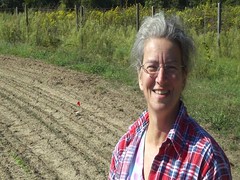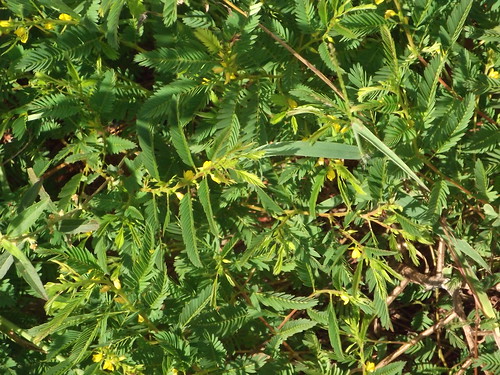A small lily that grows only in counties along the Georgia-Florida border, and maybe in a few in Alabama: Treat’s Rain Lily, Zephyranthes atamasca var. treateiae. These days it’s classified as an amaryllis.
-jsq
A small lily that grows only in counties along the Georgia-Florida border, and maybe in a few in Alabama: Treat’s Rain Lily, Zephyranthes atamasca var. treateiae. These days it’s classified as an amaryllis.
-jsq
Here’s a slideshow: Continue reading
Gelsemium sempervirens has been blooming around here since January Continue reading
Broccoli and gardener: Continue reading
 Aunt Elsie gets mentioned again for her pioneering career in plant ecology.
Aunt Elsie gets mentioned again for her pioneering career in plant ecology.
According to the Nature Conservancy (undated), Tennessee Coneflower — No Longer Endangered
After years of hard work and the support of many dedicated individuals, an iconic flower is once again thriving in Tennessee. On August 4, 2011, the U.S. Fish and Wildlife Service announced the removal of the Tennessee coneflower from the Endangered Species List, marking an extraordinary recovery from the brink of extinction. The story of the coneflower exemplifies the power of conservation.Her nephew Patrick found this.In 1968, Vanderbilt biology professor Elsie Quarterman and graduate student Barbara Turner accidentally discovered the fuschia-colored coneflowers at Mount View Cedar Glade. The plant had been thought extinct until the rediscovery. In time, three other coneflower sites were discovered in Davidson and Wilson counties. In 1979, the Tennessee coneflower became one of the first plants to be recorded on the Endangered Species List.
Quarterman subsequently became a trustee of the Tennesee Chapter of The Nature Conservancy and urged the protection of the cedar glade habitats where the Tennessee coneflower and other rare plants have adapted to live in harsh, stony conditions.
-jsq
 Gretchen explains it all at Okra Paradise Farms:
Gretchen explains it all at Okra Paradise Farms:
Gretchen Quarterman explains gardening at Okra Paradise Farms, 6 October 2011.
Video and pictures by John S. Quarterman.
-jsq

Pictures by John S. Quarterman, Lowndes County, Georgia, 11 September 2011.
I had to forage far to find this example of Chamaecrista fasciculata aka Cassia fasciculata! Oops, you didn’t see this, did you? Continue reading